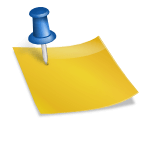In May of 2014 The Journal asked the question, “Adaptive Learning: Are We There Yet?”. In this article, John Waters gives a nice overview of what adaptive learning is. Waters defines adaptive learning as “an approach to instruction and remediation that uses technology and accumulated data to provide customized program adjustments based on an individual student’s level of demonstrated mastery.” Often found in K-12 classrooms Adaptive Learning models were developed to be able to facilitate personalized instruction based around learning outcomes. Most frequently this type of instruction takes the form of intelligent tutoring systems that “learn” the student’s strengths and weaknesses and provides them with a custom set of activities.
As one can imagine, this form of adaptive learning is best suited to lower order skill sets where memorization or “drill and kill” activities might traditionally be used. Using an intelligent tutoring system provides support for students who may struggle with concepts while not penalizing those who have already mastered them. Many of the textbook publishers have developed robust intelligent tutoring system specifically for these types of classes.
But the question, are we there yet, posed in 2014 still remains a good one. A recent article in Inside Higher Ed seems to indicate that perhaps we aren’t, even for those courses best suited to this type of learning.
In August 2015, Paul Fain reported on the Essex County College pilot of the ALEKS adaptive math learning system. Every indication was that the use of ALEKS would improve student results in their entry-level math courses. This was the opposite of what actually occurred. So what happened?
Perhaps no surprise was the finding that there was a gap in faculty perception of how these types of adaptive systems can/should be used. One theory is that faculty may have bought into the idea that these systems are “plug and play”. This type of thinking may make faculty complacent. To be successful, faculty interaction is still important. The adaptive learning tool provides faculty with important information about where students are, what they struggle with, and allows all students the opportunity to arrive at a common point in the curriculum on their own terms. For some students that need to simply brush up on a concept, they may be able to move quickly through a module while others may need to review more thoroughly. From this point the instructor is able to assure that students cannot just pass an assessment but actually apply the concept using higher order thinking skills.
Perhaps it is also no surprise that student perceptions also need to be adjusted for this model to be successful. Many students aren’t prepared (or willing) to be responsible for their own learning. If faculty aren’t holding students accountable for their progress through the modules (and helping facilitate when the student get stuck), students may find themselves falling behind to such an extent that they drop the class or simply don’t complete it.
The key to success, it appears, is making sure that faculty and students understand that these courses, in many ways are more work than a traditional course, but that the end result can be a more rewarding and enriching experience for both students and instructors. In the end, we may not be there yet, but we are getting closer to a world where personalized education is the norm and not the exception and adaptive learning will play an important part in that transition.






Learning before the more unconventional ways, were not flattering to students who were struggling to understand the material. New methods for instructional design allow any student to stay in the same class but offer tutors and help for students who need extra assistance.
Math is definitely one the of the fields that benefits from extra tutors and programs. When I went to University of Phoenix, they offered free tutors for math. Not every college does this in their instructional design. It is offered but must be paid for, which leaves me wondering how successful is their instructional design.
I think you are right. It is also important for the instructor be involved with how the student is learning. In online class, many instructors are not as assisting when you ask for help. This is even after you have reviewed all of the resources.